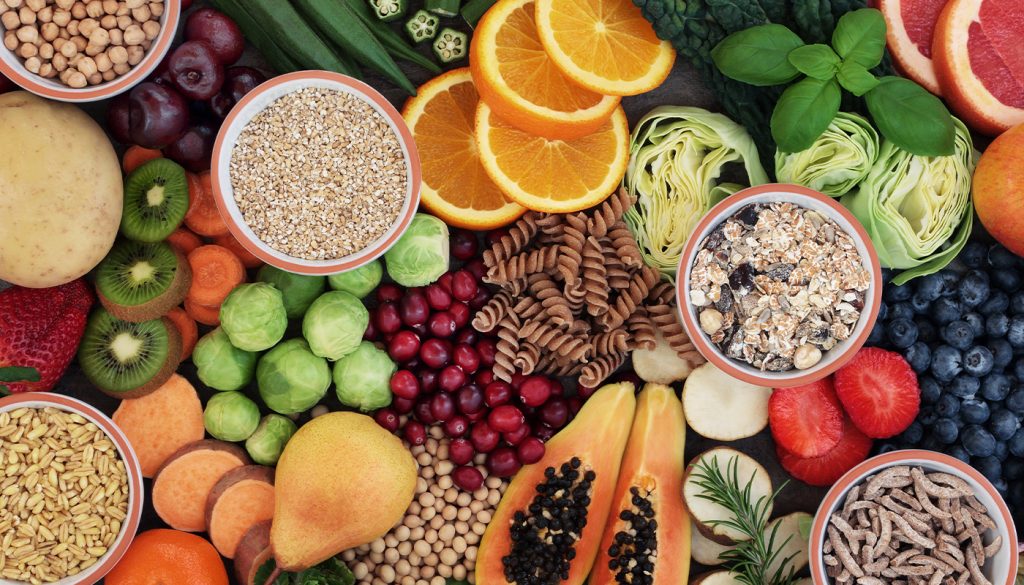If you’re interested in health and wellness, you’ve no doubt heard about GLP-1. This hunger-quieting hormone has never been more famous because of its ability to improve blood sugar levels, control appetites and support weight loss.
The Hunger-Suppressing Hormone

Glucagon-like peptide 1, or GLP-1, is a hormone naturally released mainly in your gastrointestinal tract.
After you eat, your body breaks down carbohydrates into simple sugars that travel through your bloodstream. From there, GLP-1 triggers your pancreas to release insulin to usher glucose out of your bloodstream and into your cells, which your body can use as nourishment and energy.1
Without enough GLP-1, your body won’t produce enough insulin to properly lower your blood sugar levels, resulting in hyperglycemia and often diabetes.2
The Obsession With GLP-1 Mimicking
New ways to mimic GLP-1 have flooded the market, but many of these synthetic appetite suppressants come with extreme side effects or cost an outrageous amount. Not to mention, according to the Cleveland Clinic, as many as 80-95% of dieters gain back the weight they lost.3

Your body shouldn’t fall victim to quick-fix obsessions. Ones where, once you stop taking them, you gain the weight back — or more — because you haven’t improved the underlying nutrition and fitness habits that will help you manage your weight throughout the rest of your life.
What if there was, instead, a way you could stimulate GLP-1 production naturally and create good habits to maintain your weight for the rest of your life? The good news is there is a way! It begins with feeding your body the proper nutrients to support your microbiome, starting with fiber.
Your Diet’s Impact on GLP-1

Because GLP-1 secretion mainly starts in your gut, the food you eat plays a critical role in how much your body can produce. In a 2016 study, specific nutrients, including monosaccharides, peptides and short-chain fatty acids, were shown to influence GLP-1 secretion. 4
Foods that are naturally rich in these nutrients include:
- High-fiber grains like oats, barley & whole wheat
- High-fiber vegetables like Brussels sprouts, broccoli & carrots
- Eggs
- Nuts
- Avocado
- Olive oil
Facts About Fiber
Fiber isn’t a new, trendy concept in the health space like adaptogens or medicinal mushrooms, but we still think of it as the unsung health hero. When you have the appropriate amount of fiber in your diet, you can feel lighter and more energized than you could ever imagine.

In fact, fiber can help you improve your gut microbiome. New studies have shown that when there isn’t enough fiber in your intestines, the microbes will degrade the mucus barrier, which can lead to inflammation. Fiber-rich diets can help feed the beneficial microbes, supporting a healthier digestive system.5
Fiber is also incredibly beneficial for weight loss in more ways than just boosting GLP-1 levels. When wet, soluble fiber becomes a gel that slows down the digestive process. The effect is a feeling of fullness and a slower release of sugars into your bloodstream, keeping you full and satisfied for longer.6
The American Heart Association recommends 25-30 g of daily fiber intake, but average adults only consume 15 g per day.7
Your Lifestyle’s Impact on GLP-1

Like any other hormone your body produces, certain environmental factors can play a role in GLP-1 production.
Follow these tips for increasing your GLP-1 levels:
- Exercise Regularly: Studies show that moderate to vigorous exercise can help boost natural GLP-1 levels.8 Try incorporating a cardio activity into your routine three times each week. Some great options are jogging, powerwalking, cycling, swimming or dancing.
- Get Plenty of Rest: If you’ve taken our HGH booster, Renew, you know that sleep can significantly impact your hormone levels. Be sure to get at least 7-8 hours of quality sleep every night so your body’s cells can function properly.
- Calm Your Mind: While physical stress with exercise can help increase GLP-1 levels, mental stress can have the opposite effect. Reducing your stress levels can help balance your hormones, including GLP-1. Try calming your mind with deep breathing and meditation, soothing music and connecting with friends.
Start Sugar Stop
Our best tip for helping increase your body’s GLP-1 levels is to increase the fiber you get each day. A great way to ensure you ingest the recommended amount of fiber or more is to take a high-fiber supplement like Co.Lab™ Sugar Stop.

The nature-first active ingredients in Sugar Stop have been shown in clinical studies to help block up to 40% of sugars from starch-based foods and up to 20% of sugars from sucrose (table sugar) to support a healthy weight and curb cravings.
Featuring 10 g of fiber:
- Helps curb cravings
- Soluble and insoluble fibers give you a feeling of fullness
- Sourced from four different plants (inulin from chicory root, rice hulls, psyllium seed husk and gluten-free oat bran)
If you want to increase your GLP-1 levels naturally, add fiber to your diet. Focusing on your fiber intake with a high-fiber supplement like Sugar Stop can help you curb your cravings, feel full and satisfied and manage your weight for the long term. Try it today and see the difference it can make.
Sources:
1https://www.health.harvard.edu/staying-healthy/glp-1-diabetes-and-weight-loss-drug-side-effects-ozempic-face-and-more
2https://my.clevelandclinic.org/health/diseases/9815-hyperglycemia-high-blood-sugar
3https://health.clevelandclinic.org/why-people-diet-lose-weight-and-gain-it-all-back
4https://www.ncbi.nlm.nih.gov/pmc/articles/PMC5148911/
5https://www.ncbi.nlm.nih.gov/pmc/articles/PMC5131798/#:~:text=Regular%20consumption%20of%20dietary%20fiber,reducing%20the%20incidence%20of%20colitis.
6 https://www.mayoclinic.org/healthy-lifestyle/nutrition-and-healthy-eating/in-depth/fiber/art-20043983
7 https://www.ucsfhealth.org/education/increasing-fiber-intake#:~:text=How%20much%20fiber%20do%20I,about%2015%20grams%20a%20day
8 https://pubmed.ncbi.nlm.nih.gov/24824772/
These statements have not been evaluated by the Food and Drug administration. This product is not intended to diagnose, treat, cure or prevent any disease.


